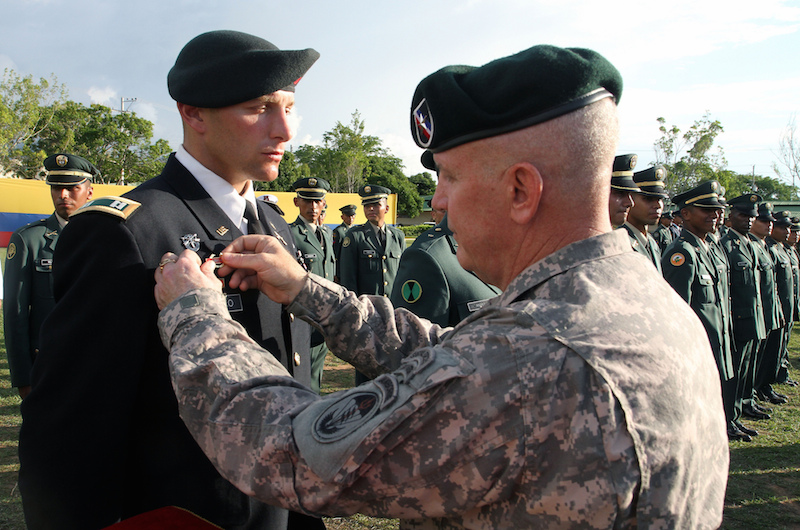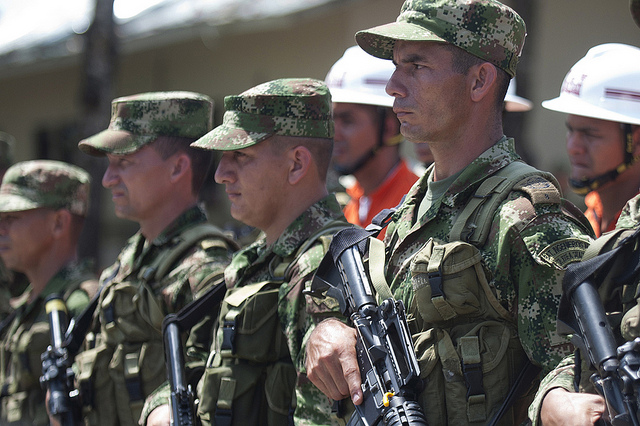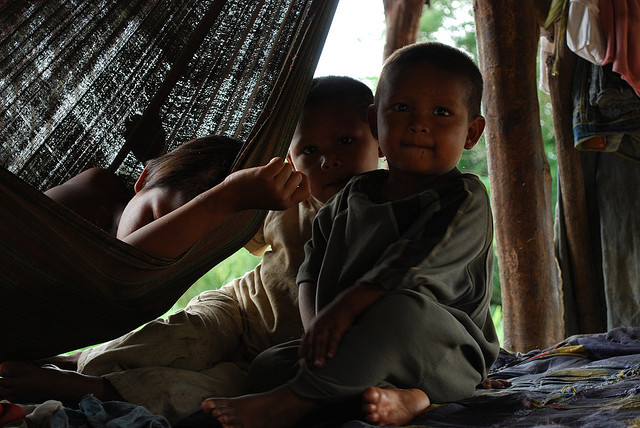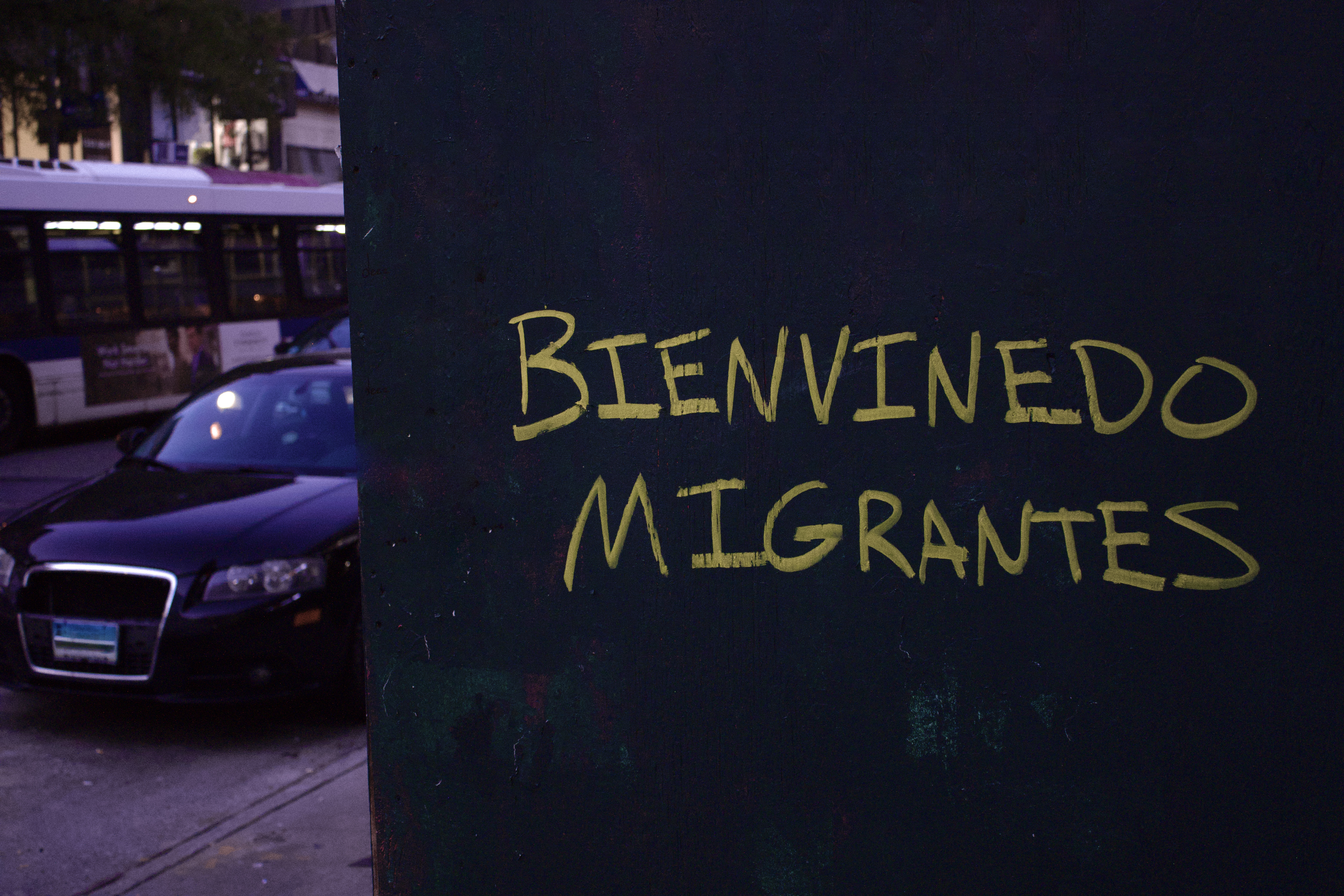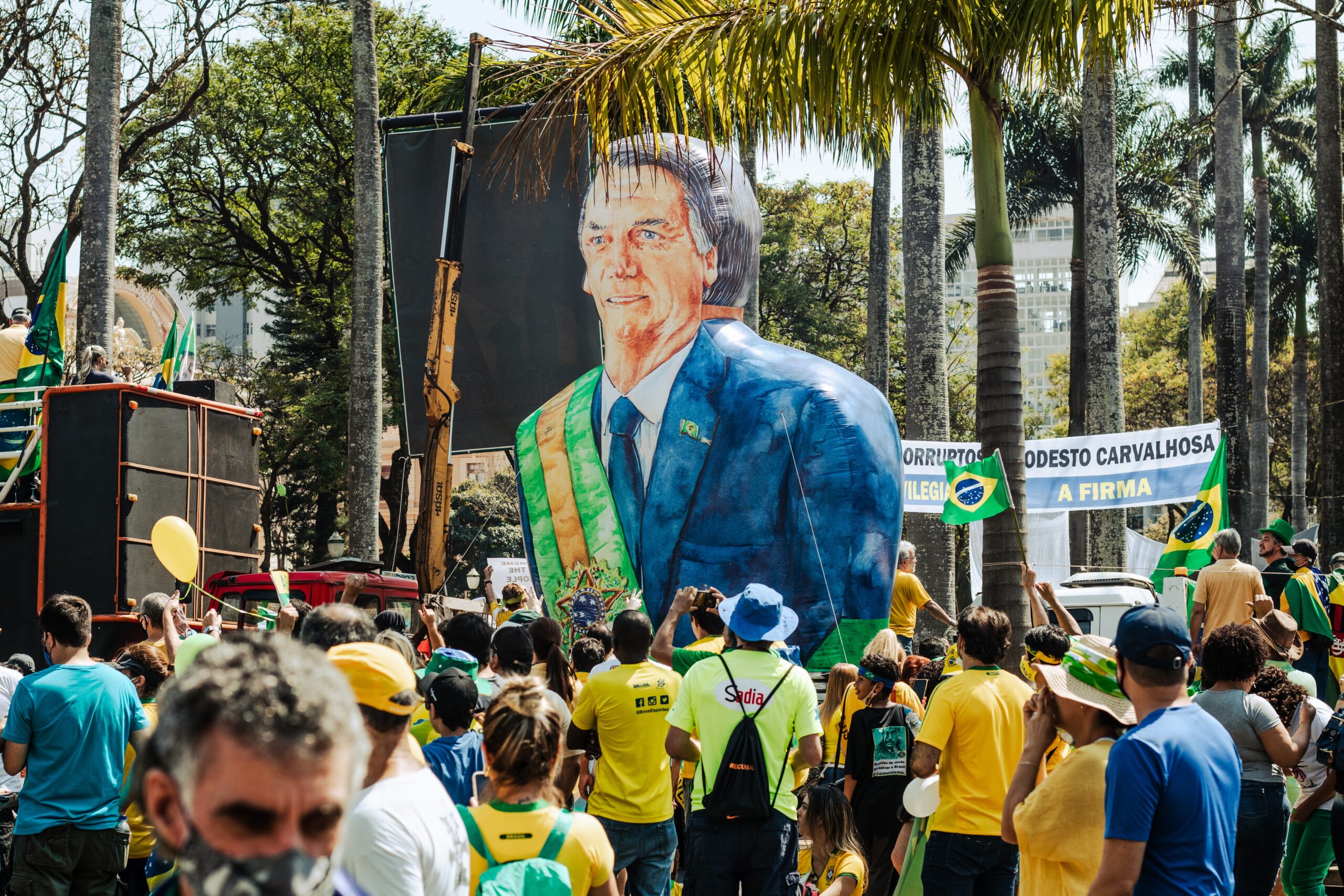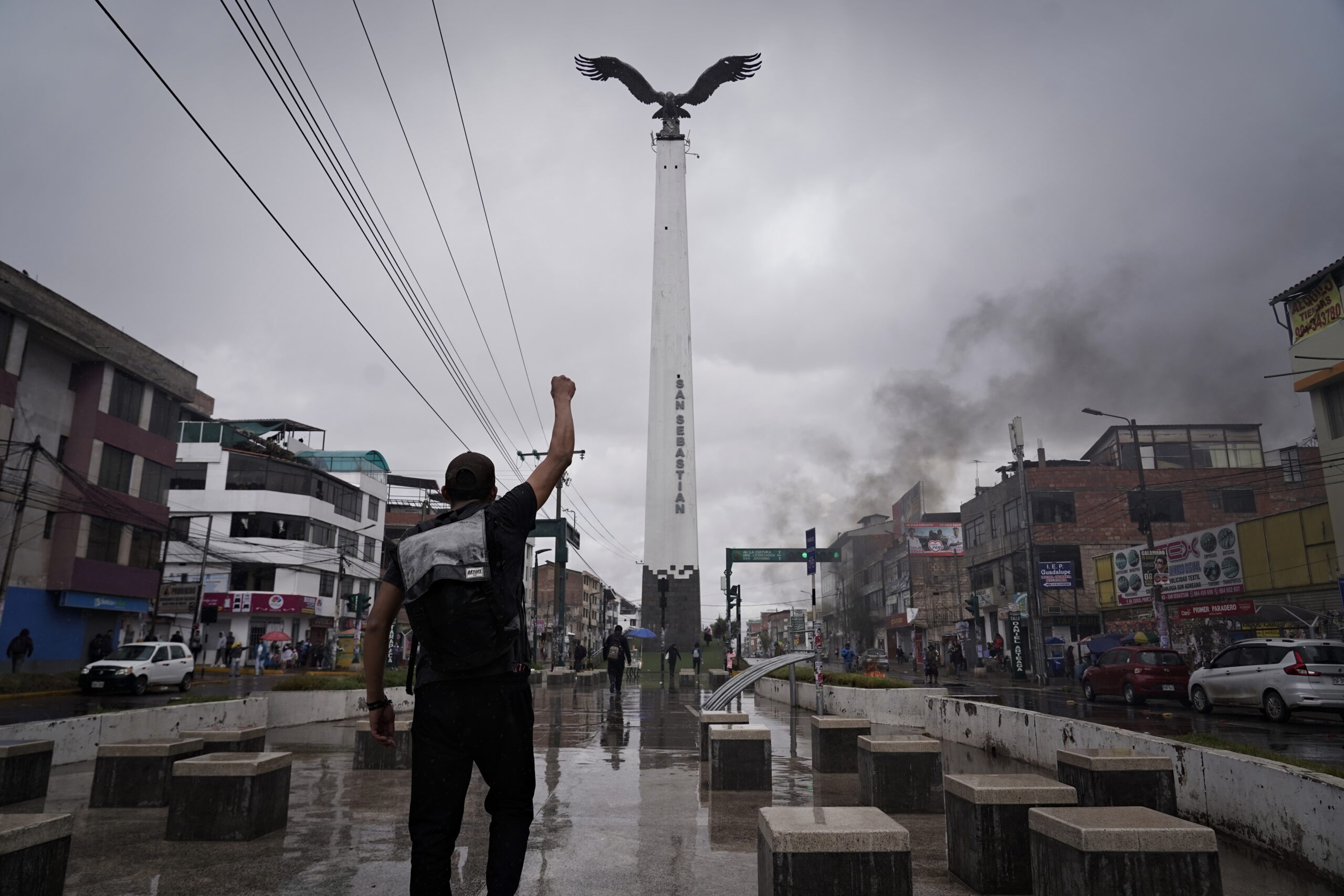
Andes, Peru, Photo Essays
Protests Across Cusco
January 10, 2023 By Daniel Zawodny
CUSCO — People hurried along Cusco’s Avenida El Sol on Dec. 19 to a different sort of rhythm. Lines of locals waiting to withdraw cash snaked longer than normal down the sidewalks outside of banks; few tourists remained to amble through the city center; the whistle of transit police directing traffic slowly ceded airwaves to the shouts of marching protesters, blocking all three lanes of the northernmost half of Avenida El Sol.
There, in front of Cusco’s Palacio de Justicia, Jose Guillermo Ramos and his fellow university students took a brief pause in their march. For a moment they directed their shouts and slogans to the police and military guarding the doors before continuing — they would join their voices with the larger demonstration happening close by in the Plaza de Armas, the center of Cusco’s historic district and heart of the Incan empire’s capital city.
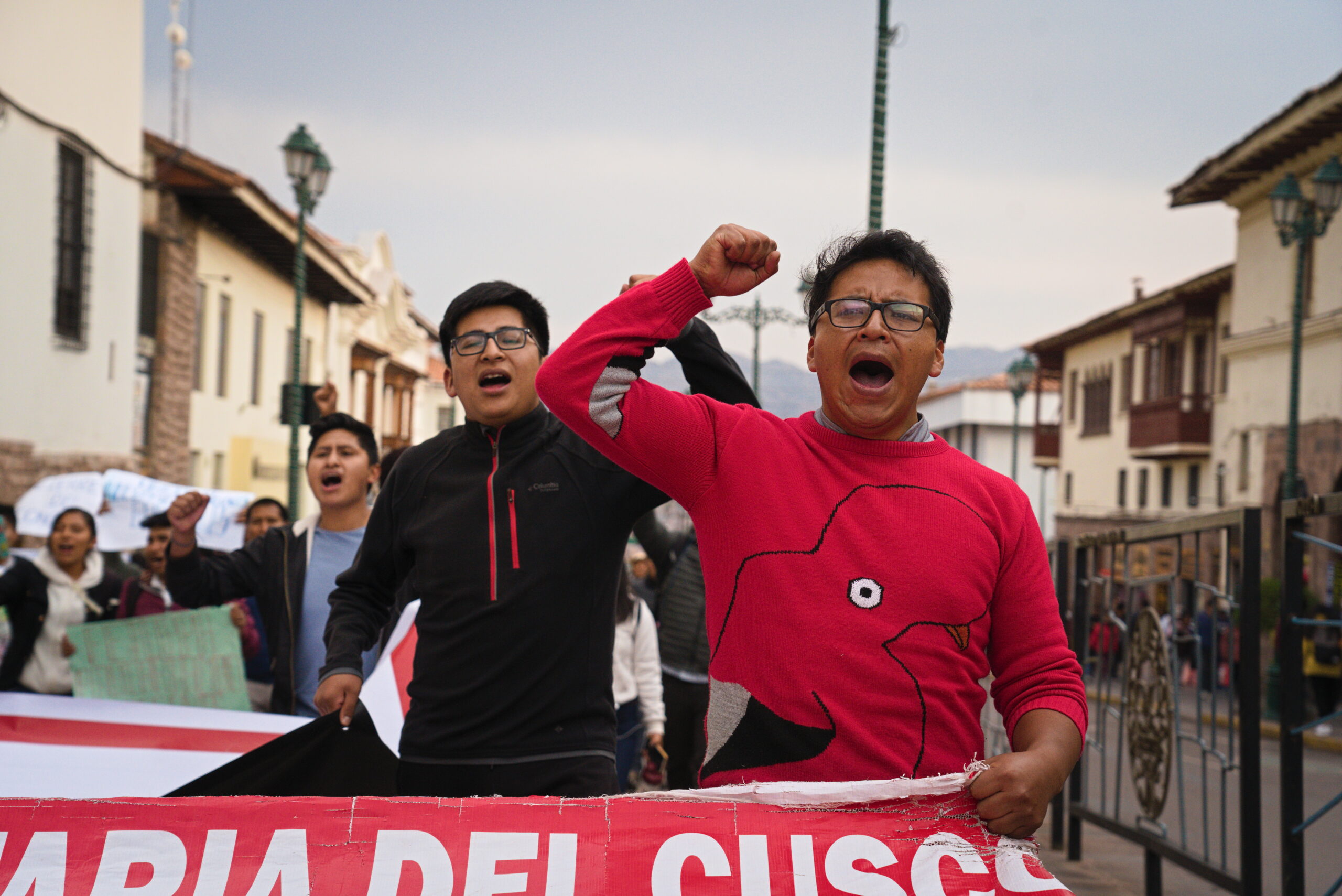
Jose Guillermo Ramos leads a group of university students in a march along Cusco’s Avenida el Sol on Dec. 19. (Photo: Daniel Zawodny)
“Our country is in complete chaos, what we want is for it to stop,” said Ramos, while continuing the march.
When Peru’s conservative Congress finally succeeded in ousting leftist president Pedro Castillo on Dec. 7, protests were not quick to materialize — at least not in Cusco. An eerie calm took over the tourist haven as residents and businesses braced for what they thought might come. According to Ramos, it took a couple of days for different parts of society to organize.
Starting the night of Dec. 12, the paro, or strike, brought Cusco to a standstill. Buses and cars stopped running; many storefronts remained closed for nearly a week; pedestrians meandered slowly down major roadways, and any taxis that snuck onto the road risked being accosted by protesters who filled roadways with rocks, branches and burning tires. Supermarkets spent multiple days without much produce, and motorists struggled to find gas to fill their tanks as trucks were unable to pass multiple roadblocks set up along main highways.
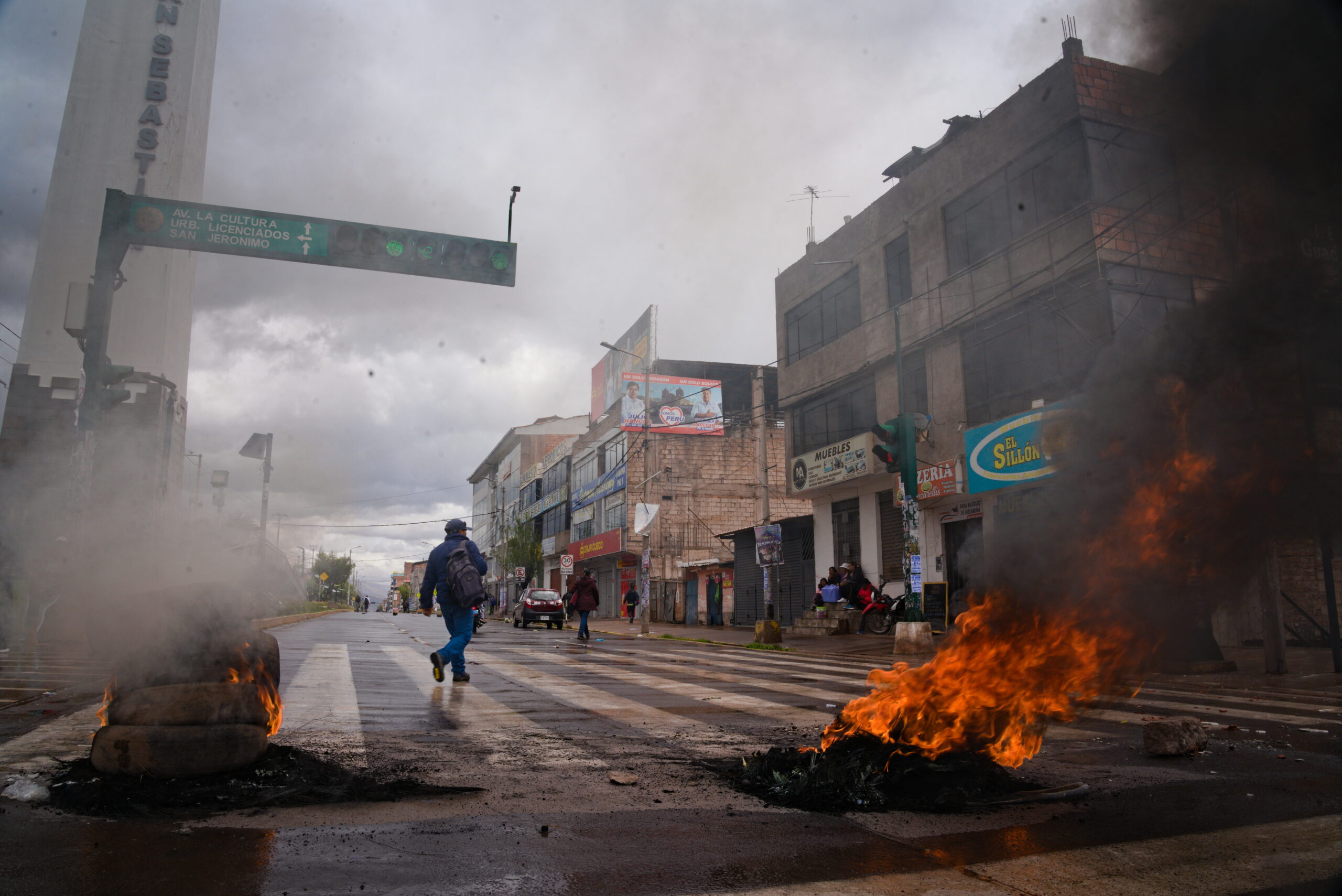
Protesters used stones, brush and even burning tires to block off roads throughout Cusco, including Avenida la Cultura which stretches east to west across the entire city. (Daniel Zawodny / Latin America News Dispatch)
The loudest cries demand immediate elections to replace all members of Congress — whose approval rating sits dismally in single digits — and Vice-President-turned-President, Dina Boluarte, who has remained firm on her decision not to resign despite previously promising to follow Castillo out. But Ramos says that the paro that halted several cities across Peru for days cuts deeper than just a wish for new elections.
“There’s an economic crisis, there’s a political crisis, us as students don’t receive as high a quality of education as we deserve,” said Ramos. “What we need is a new constitutional assembly that changes the rules in our constitution so that things can get better in our country…we are tired of politics as usual.”
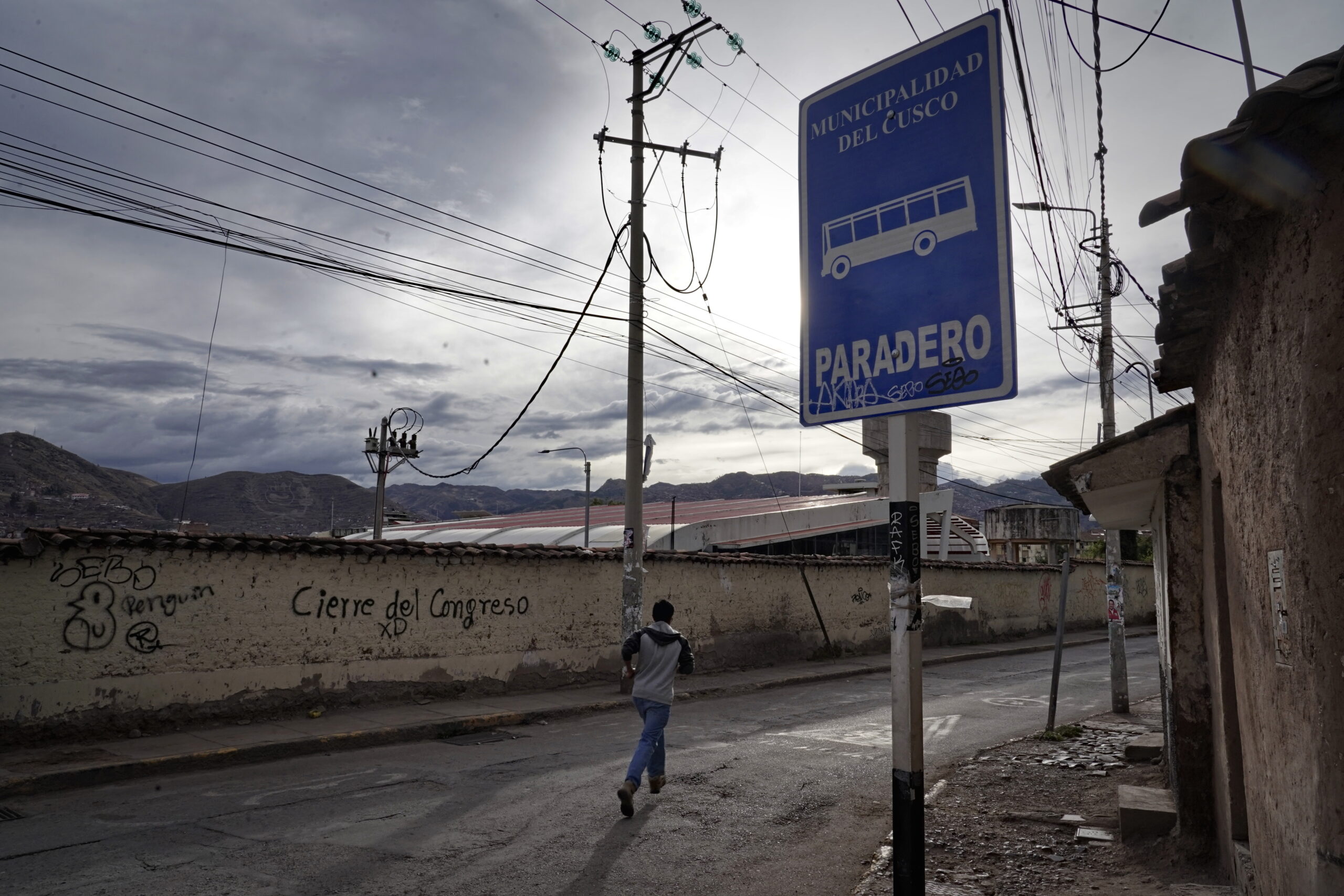
Avenida Collasuyo, another major thoroughfare that crosses Cusco, remained quiet on Dec. 15. Calls for new elections and the closure of Congress lined the road at various points. (Daniel Zawodny / Latin America News Dispatch)
Instances of looting and vandalism started occurring in what most consider a safe city, acts that many locals attributed to opportunistic wrongdoers who had nothing to do with the protests. Combined with the roughly dozen protesters killed by security forces across the country up to that point, locals lamented the impression Peru might leave on visitors. Most locals agree that Cusco “runs on tourism.”
And most tourists found themselves stuck. Just as in the southern coastal city of Arequipa days earlier, protesters managed to climb the wall surrounding Cusco’s airport and get on to the tarmac. Operations shut down for the better part of a week.
Cosimo Fancelli, visiting Peru from Italy for a friend’s wedding, compared the days he and his friends spent locked down in Cusco to the early days of the COVID-19 pandemic. On Dec. 16 they enjoyed a smoke outside a restaurant in Cusco’s historic center—their first venture outside of their AirBnb rental in four days. Their original flight from Cusco to Arequipa, both the destination for the wedding and the city with some of the heaviest protests, was canceled and pushed to Dec. 19, the same day as the wedding.
When Maricel Malacalza and her husband, Mariano Martini came down the mountain after visiting Machu Picchu on Dec. 13, public transportation had already shut down. The Argentine couple had to cobble together a way back to Cusco that included a 60km walk and hitching a ride from a police truck.
“In their truck they could get through (the first roadblocks) and people weren’t there, but at the last roadblock there was a tree in the road and tons of people, and the police didn’t want to go any closer,” said Martini.
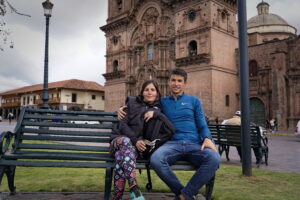
Maricel Malacalza and Mariano Martini, vacationing in Cusco from Argentina, sit in Cusco’s Plaza de Armas days after having to walk 60km to return from Machu Picchu. (Daniel Zawodny / Latin America News Dispatch)
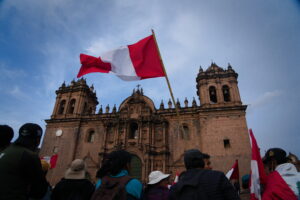
Dozens of Peruvian flags flew throughout the Plaza de Armas as protesters called for President Boluarte and members of Congress to resign. (Daniel Zawodny / Latin America News Dispatch)
With flights, hikes and bus routes canceled, tourists like Malacalza and Martini found themselves with extra time to sit in the Plaza de Armas. Only now they were joined by protesting university students like Jose Ramos and members of rural communities from the surrounding countryside. People like Juan Bautista, from the town of Acomayo, traveled into Cusco’s center daily and gathered on the steps of one of the plaza’s historic buildings. Their signs called for President Boluarte to resign, a makeshift coffin on the ground calling for Congress to join her.
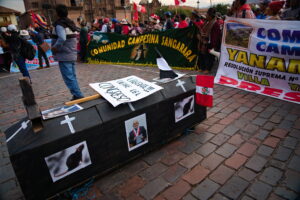
Images of President Dina Boluarte and members of Congress adorn a makeshift coffin that sat in the middle of protests in the Plaza de Armas on Dec. 19. (Daniel Zawodny / Latin America News Dispatch)
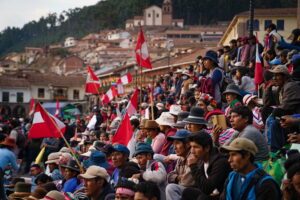
Members of the Acomayo community, a rural town south of Cusco, spent three days occupying the steps of one of Cusco’s historic buildings in protest. (Daniel Zawodny / Latin America News Dispatch)
Estimates for the percentage of Peruvians working in the informal economy hover anywhere between 60 and 70 percent, a majority that includes most taxi drivers and street vendors. Each of Cusco’s many public bus lines are actually private companies that do not receive any money from federal or local governments. For most Peruvian workers, striking to show discontent with the government could mean not being able to put food on the table.
So the strike ended. Buses got back on the road; the military secured the perimeter of the airport and got planes back in the air. Shops opened and vendors took the streets to sell alpaca wool clothing and other keepsakes again. But people still found ways to show their support for the principals behind the strike—as bus routes began operating again, most did so with calls of support for the paro painted across windows.
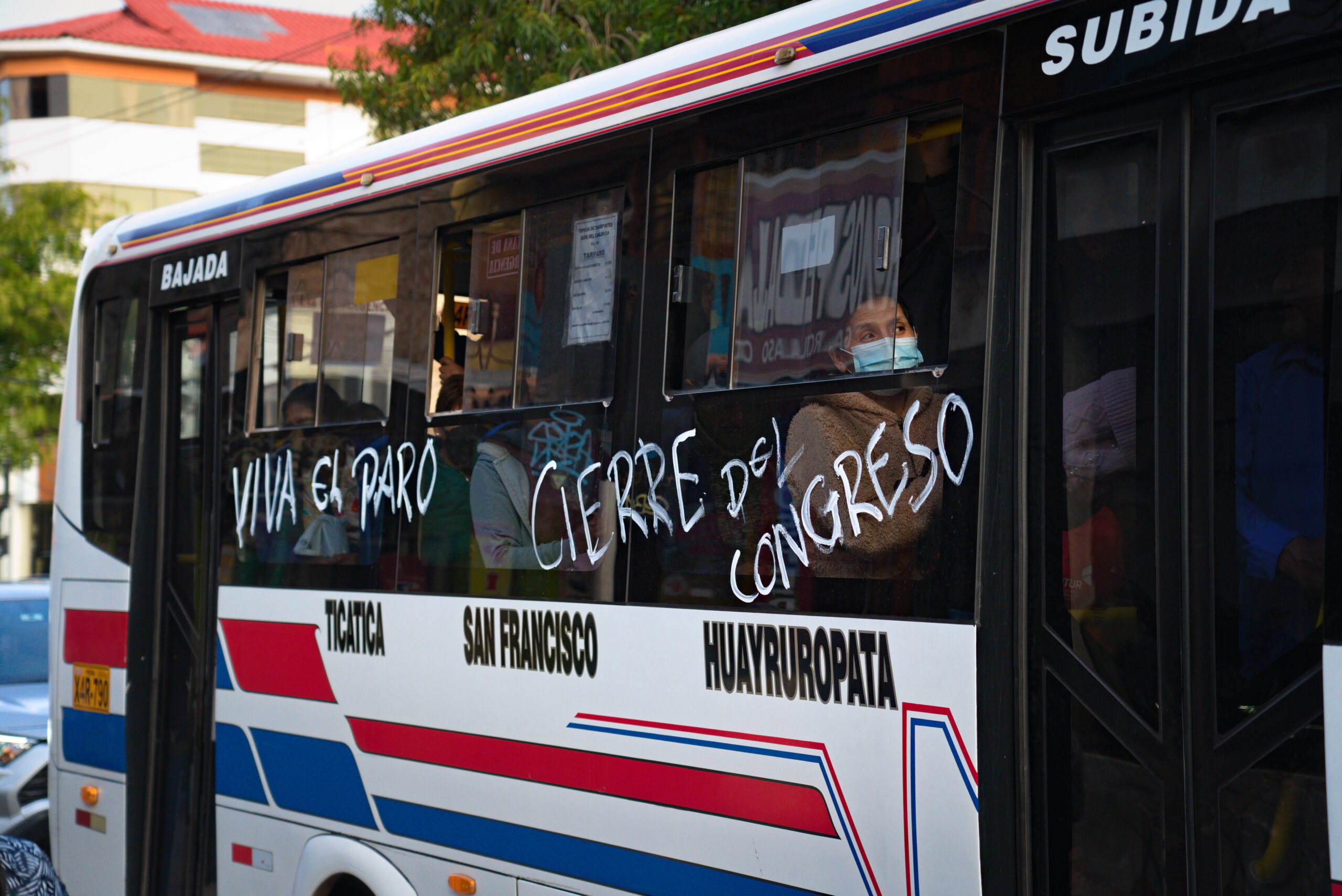
Most buses across Cusco had messages of support for the paro throughout the month of December. (Daniel Zawodny / Latin America News Dispatch)
One bus driver who declined to give his name said that not everyone was on board though. His bus windows called for Congress to resign, but only because a politician came by the terminal and instructed him to paint them just so, he claims. He said that he stayed home for three days during the strike, but only because the company for his bus, the Arcoiris, obliged him to.
Cusco returned to its eerie calm. Protesters agreed to a truce so that Peru could celebrate Christmas and the New Year with relative normality. But calls for another paro quickly circulated across social media for the first week of 2023, and protesters have taken the street once more. In a country plagued with government corruption, some Peruvians just want to get on with their lives the way most do—relying on themselves.
But others are ready to dig in for a long fight. When Juan Bautista and Isidro Ovalle sat with members of their community on the steps of one of Cusco’s historic buildings in protest, they said that the protests wouldn’t end until President Boluarte and members of Congress resigned.
“We’re here fighting for our country,” said Ovalle.
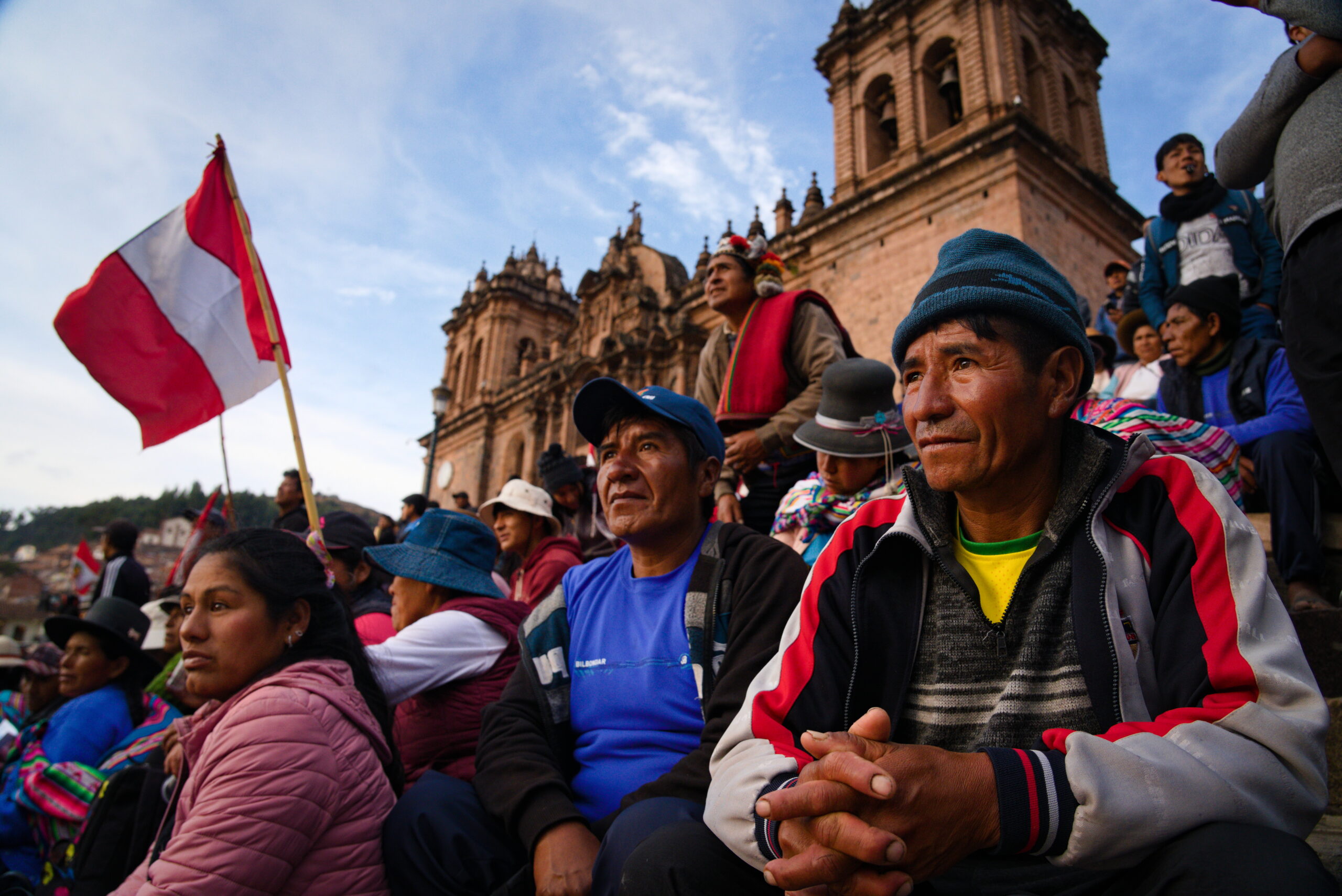
Juan Bautista (center) and Isidro Ovalle (right) sit with members of their community, Acomayo, on Dec. 19 as part of protests calling for new elections. (Daniel Zawodny / Latin America News Dispatch)
About Daniel Zawodny
Daniel Zawodny is an independent journalist who covers immigration and immigrant issues. He also holds full accreditation from the Department of Justice to represent immigrants before the U.S. Citizenship and Immigration Service and U.S. immigration courts.
